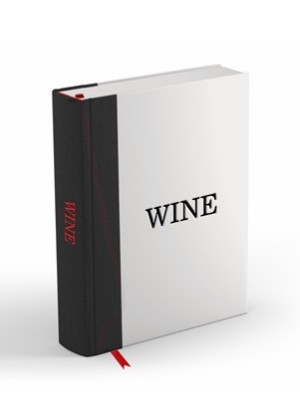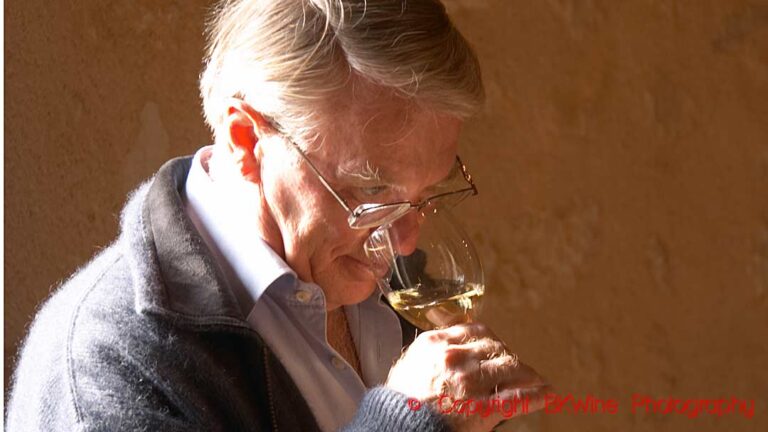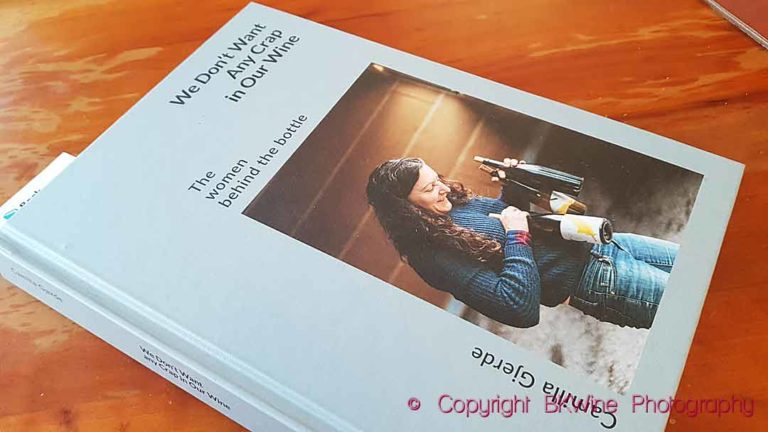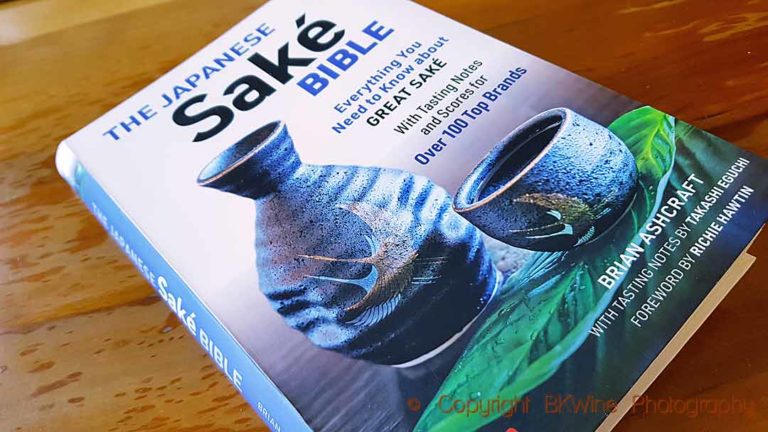Title: Wine (full title: Wine, the basics of wine)
Author: Filip Verheyden, Romana Eschensperger, Fiona Morrison
Publisher: Tong Magazine
Wine is a new wine book with great ambitions. It wants be an introduction for the beginner and also something for the avid wine enthusiast. It wants to cover almost everything in the field of wine: how to make wine, the world’s wine countries, how to taste and drink wine and so on. It is ambitious, sometimes good, but it does not quite reach all the way to its goal.
[Important notice: this review is based on the Swedish translation of the book Wine.]
 Wine is small and handy in size, but chubby. Nearly 300 pages. The book is written by three authors, Fiona Morrison (vineyard owner and Master of Wine, MW), Romana Echensperger (sommelier and MW student), and Filip Verheyden (publisher of the Tong wine magazine and MW student).
Wine is small and handy in size, but chubby. Nearly 300 pages. The book is written by three authors, Fiona Morrison (vineyard owner and Master of Wine, MW), Romana Echensperger (sommelier and MW student), and Filip Verheyden (publisher of the Tong wine magazine and MW student).
In the preface they put their aim high:
“[the authors] want to spread ‘real’ knowledge based on professional expertise.”
Unfortunately, this is precisely where it fails.
But the book has many positive sides.
It is elegantly designed and invites you to pick it up and leaf through it. With a neat and easy to handle format that makes it easy to browse and jump from topic to topic.
It is an excellent introductory book for anyone wanting to dip their toes into the world of wine, without going into depth. You get a quick introduction to the most varied areas of the world of wine.
The book is divided into four sections: how to drink wine, wine and food, the vineyard and how to make wine.
“How to drink wine” is about all practical sides around to how to buy and to consume wine. It also includes a brief introduction to the most important of the world’s wine countries.
There is a big and useful section about how to combine food and wine. Most of it is good and sound advice with pointers to exciting combinations even if it sometimes goes a bit too much into the (debatable) theory of wine-and-food pairing. What is especially nice here is that you often get very exciting and inspiring wine suggestion to the food. Many unusual wines that are absolutely interesting to try. That one (oddly) has specific wine pairing suggestion for sandwiches might be explained by that one of the authors is Belgian? It is this section that feels most well composed and most inspiring.
“The vineyard” goes through the most important grape varieties and provides an introduction to what the winemaker does in the vineyard.
“How wine is made” takes the reader into the wine cellar and talks about different techniques in winemaking.
Most of it is well written (and also generally well translated into Swedish; not always easy).
But sometimes the text gets too tangled up in complicated constructions and unnecessary technical terms or obscure reasoning instead of being straightforward and clear-headed.
But…
But… Wine contains too many factual errors and questionable assertions. This is strange, considering who wrote the book. Some examples (quotes are not verbatim):
– “Brettanomyses is more commonly found in wines with low pH” (no, the other way around)
– “Under poor growing conditions the vines produces more grapes with more sugar” (no, the other way around. Or at best, it depends.)
– The difference between mass selection (sélection massale) and clonal selection seems misunderstood or at least very strangely explained
– “When the champagne is degorged you put the bottleneck in liquid nitrogen” (no, in a glycol solution)
– “It is common in Bordeaux to soften the tannins by whisking 2-6 egg whites into each barrique” (no, it’s very unusual to use egg whites. They typically use technical albumin and generally for clarification rather than to influence the tannins)
– “European rosé wines are always made from black grapes” (no, white grapes may be used, even outside of Champagne)
– “Bituminous coal is used to clarify wine” (no, it is forbidden to use bituminous coal)
There are unfortunately too many dubious or incorrect things in the text to give a completely reliable impression. (This is just a few examples.)
That one also dismisses wine blogs as largely peripheral with (for example) the sentence that “bloggers publish very subjective views and opinions” (which wine writer does not?) seem strange at a time when less and less substantial information about wine is printed on paper and more and more is written on the internet.
It is also unfortunate that the images are generally more used for their graphic elegance (and the result is very attractive!) than for their relevance to the subject. For example, the section on organic farming is illustrated with a picture of a moon (why not something that has something to do with organic wine making?); the chapter on bottling is illustrated with some bottlenecks (why not a picture of a bottling process?), and so on. A missed opportunity to contribute useful information.
As a conclusion: an elegant, ambitious and nicely constructed book but that does not reach its goal because it contains too many inaccuracies or debatable statements. It can be recommended (with some caution) primarily to those who are a little curious about wine and want something inspiring and easy to leaf through but who are not too concerned with all the facts and details.











8 Responses
You know that spreading false information is illegal, don’t you? Read the book properly, in stead of spreading lies! And study more about wine!
Filip,
I can assure you that I have read the book in detail. Since it was something that was quite “written up” by some media I was interested to see what it contained. Unfortunately it did not live up to its promises and I was actually quite surprised (and disappointed) since I expected better.
I am also as keen as ever to study more about wine, but your book is unfortunately not the best source to do it. You, on the other hand, may want to look for a future English edition of this https://www.bkwine.com/our-books/the-creation-of-a-wine/.
If you think that my critique is wrong then you are very welcome to share that opinion here and for example say in what way I am spreading “lies”.
That would be much more constructive: to be concrete and factual. It would also help your credibility more than making silly legal threats. Your reaction is surprising and seems more to be that of someone that has nothing to say.
This comment field is open for any serious and useful comments you may have. I look forward to hearing what you think is wrong – not to mention “lies” – in my comments on your book.
Dear Per,
I will give one example: you say that according to the book “Brettanomyces is commonly found in wines with low pH”, while the book says: “Red wines from warm regions with lower acidity levels are particularly susceptible to Brettanomyces”. Do you not know how pH and acidity are linked…? But I will not go through the whole list…
I think you are a frustrated little man who wants to make money or at least try to have attention from the outside world by trying to take the sunshine away from people who succeed in what they do. I can only say that the 18,000 people who bought one of our books are very happy and that we never had any complaint about the contents of the book. I think that as a WSET graduate and second-year Master of Wine candidate, I can prove that I know at least something about wine, together with my co-authors…
Have a good day, little man.
Filip Verheyden
P.S. I suggest that you take your “review” off your site before I get the idea of putting my lawyers on this.
Philip,
As I have said clearly in the review, my article is based on reading the SWEDISH version of the book. Here is what it says in the book:
”Röda viner från varma regioner med lägre pH-nivåer är särskilt känsliga för brettanomyces.” (page 64 of the Swedish book)
This translates in English into:
“Red wines from warm regions WITH LOWER PH LEVELS are particularly sensitive to brettanomyces”.
In other words, that wines from southern regions have HIGH acidity, and therefore are more prone to brett. This is clearly wrong. Wines from southern regions are indeed more prone to brett, but this is because they have LOW acidity (=high pH), but that is not what the book says.
Please look in the Swedish translation of the book if you do not believe me. That may perhaps be a translation error – I have not seen the English text – but that is nevertheless what the book says in its Swedish version. It may be that all the other factual errors that appear in the book (Swedish version) are also translation errors, but that I cannot judge since I have not seen the English version.
I have reviewed the Swedish version, as mentioned in the review, and the questionable statements I have pointed to (as well as others that I have not mentioned) are certainly there.
To be frank, I was quite surprised to see so much dubious statements in a book that was written by people that I would have expected to have a better grip on facts.
I am particularly keen on facts and scientific detail since I both have a scientific background and am the co-author of a book on vine growing and winemaking. A book which also happens to have won the award “Best Wine Book in the World for Professionals” when it was published (https://www.bkwine.com/our-books/the-creation-of-a-wine/). So I do happen to know a bit or two about these things.
I am afraid that making insulting statements on my person or making silly legal threats does not increase your credibility. It would be better to focus on facts.
Well then, Per, you should attack the Swedish publisher of the book. TONG merely sold the rights to a Swedish publisher to make a Swedish translation. You should at least have mentioned this.
Glad to know that this is now made clear. Still, your comments refer to the book “WINE”, as your title suggests, and your review damages our high professional credibility. I therefore hope that you will make the necessary changes.
Filip Verheyden
Is there anything that is not clear with:
“Important notice: this review is based on the Swedish translation of the book Wine.”?
That is (and has always been) the second paragraph in the article.
And I am not “attacking” anyone at all. I am reviewing a book.
Hagh, pH. I never got that concept right when still at high school. A more is less kind of thing, or is it the other way round?